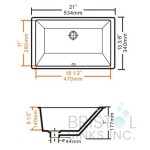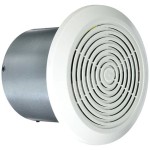How To Measure Bathroom Tiles
Measuring bathroom tiles is a crucial step in planning and designing your bathroom renovation or construction project. Accurate measurements ensure you order the correct quantity of tiles and avoid costly mistakes or delays. This guide will provide you with a step-by-step process for measuring bathroom tiles, taking into account various factors that affect the final calculation.
1. Determine Tile Type and Layout
Start by determining the type of tiles you plan to use. Different tile sizes and shapes require different measurement techniques. Consider the layout pattern you intend to create, such as brick bond, herringbone, or mosaic.
2. Calculate Room Dimensions
Using a measuring tape, carefully measure the length and width of the bathroom floor and walls where you plan to install tiles. Measure from wall to wall, taking into account any existing fixtures, such as toilets, vanities, or showers.
3. Account for Grout Joints
Grout joints are the spaces between tiles that provide support and prevent water damage. When measuring tiles, it's essential to factor in the width of the grout joints. The industry standard for grout joints is typically 1/16 inch or 1/8 inch. Multiply the grout joint width by the number of joints to add to the total measurement.
4. Consider Special Features
If your bathroom has any special features, such as a curbless shower or sloped walls, you need to take additional measurements. Measure the height of the curb or slope and adjust the tile measurements accordingly.
5. Calculate Floor Tile Coverage
To calculate the floor tile coverage, multiply the length of the bathroom by its width. Subtract the area of any fixtures that will not be covered by tiles, such as a bathtub or toilet. Add the width of the grout joints to the total length and width measurements before multiplying.
6. Calculate Wall Tile Coverage
Measuring wall tile coverage is similar to measuring floor tile coverage. Measure the height and width of each wall you plan to tile. Subtract the area of any fixtures, windows, or doors. Add the width of the grout joints to the total height and width measurements before multiplying.
7. Calculate Linear Footage
Linear footage refers to the length of a tile's edge. To calculate the linear footage of a wall, measure the perimeter of the wall where you plan to install tiles. Multiply the perimeter by the height of the wall and the number of rows you intend to install.
8. Adjust for Waste
When calculating tile quantities, it's wise to factor in a 10-15% waste factor to account for cuts, breakage, and other unforeseen circumstances. This ensures you have enough tiles to complete the project without running short.
9. Order Tiles
Once you have completed all the necessary measurements and calculations, it's time to order your tiles. Round up the total coverage area to the nearest whole number to ensure you have sufficient tiles. Consider purchasing a few extra tiles for future repairs or replacements.
Accurate tile measurements are the foundation of a successful bathroom renovation or construction project. By following these steps, you can ensure you have the right quantity of tiles and avoid costly oversights. Remember to double-check your measurements and consult with a professional if you have any uncertainties.

Calculating Wall Tiles The Definitive Guide A Civil Engineer

How Much Tile Do You Need To Remodel A Bathroom

How To Measure Many Tiles You Need For Tiling A Bathroom Or Splashback

Calculating Wall Tiles The Definitive Guide A Civil Engineer

How To Measure Your Bathroom Before You Remodel Luxury Living Direct Vanity Blog

Learn How To Measure Your Space Accurately For Tiles With Tubs

How To Measure For Floor Tiles Devon

How To Calculate Tile Needed For Your Bathroom Mercury Mosaics

How To Measure A Bathroom For Tile Tips S Sweeten

How To Measure A Room For Flooring And Install Tiles Correctly Rubi Blog Usa







